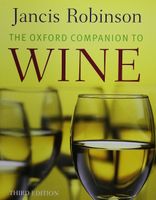Advertisement
Bordeaux: Modern history
Published 2006
Trade with Britain continued after the English were expelled, but the dutch wine trade gradually became dominant, not so much in wines for their own consumption but in inexpensive white wines for the rest of northern Europe and the Hanseatic states. The Bordeaux merchants had to fight hard to maintain their position in northern Europe, for the Dutch also bought from the Mediterranean countries.
It was the Dutch who drained the marshy médoc in the mid 17th century, thereby creating the basis for the fine wines that made Bordeaux’s reputation throughout the world. Before this the best wines were to be found in the well-drained graves near the city, notably Ch haut-brion. Today’s leading Médocain estates—Chx lafite, latour, and margaux—were probably planted in the last third of the 17th century, and reached England, to be offered at auction in the coffee houses of London, only after consignments had been captured at sea in the Anglo-French wars at the beginning of the 18th century.


